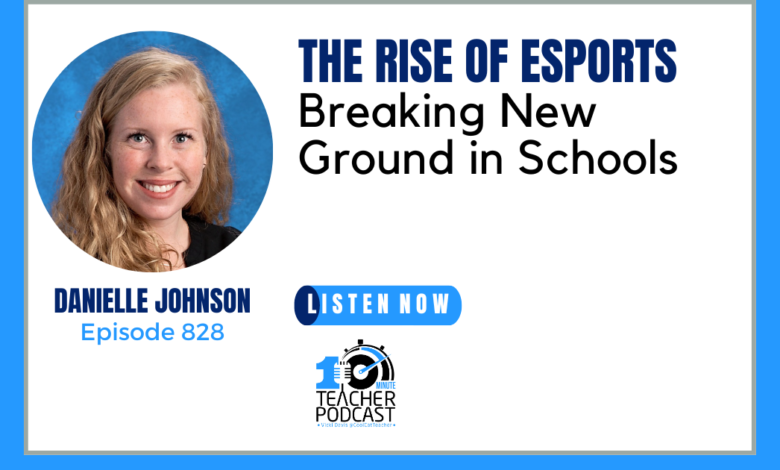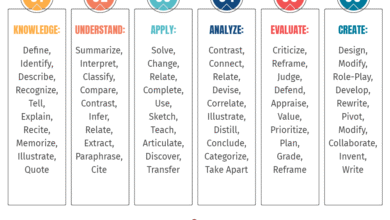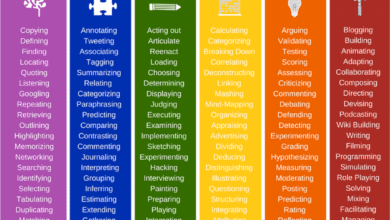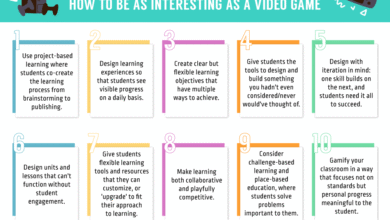The Rise of eSports in Education: Breaking New Ground

Hello there, fellow knowledge-seekers! You’re about to read a transcript that’s been generated by the AI in Adobe Premiere Pro and then me. I’ve gone through these lines like a cat chasing a laser pointer. But, even the best of us can be caught napping. Spot a mistake in this transcript? Help this teacher out and shoot an email to vicki at coolcatteacher dot com. Thank you for being helpful! – Vicki, your podcast host and friendly fellow classroom teacher.
NOTE: The time stamps are a tad off; some of these items may have been edited slightly for content.
Transcript
Vicki Davis (00:01.294)
Esports, esports, esports. Oh my goodness. Every school is trying to put in esports. You know, there are esports scholarships. It’s a whole industry now because gaming is so powerful.
Vicki Davis (00:29.506)
Today we have Danielle Johnson with us. She’s executive director for the Texas Scholastic Esports Federation, which is a teacher-run nonprofit esports organization serving Texas schools. And she works with both bringing esports, but also making sure that those reflect equity, inclusion, and citizenship. And the exciting thing is Danielle, you said that your teacher group is the largest esports
organization in the country and you have more than 60,000 players in your group. That is incredible.
Danielle Johnson (01:07.678)
Yes, esports is something that the millennials kind of came up with growing up, even in arcades and at home, and have really pushed it forward in schools. This is a place where teachers are really at an influential spot in the industry collectively, because teachers love to get together. So we formed an interstate group.
And we have 14 states that have teacher-run nonprofits that run the e-sports organizations for their state. So teachers together and the students that we serve are literally the largest e-sports organization in the country.
Vicki Davis (01:51.506)
Wow. So before we get in, I’ll tell you the complaints I’ve heard from parents. Like, well, my kid plays video games enough. I don’t want him to play any more video games. What do you say to those common complaints? And are there other common complaints that you get sometimes?
Danielle Johnson (02:10.526)
We have to think of the analog, when talking about extracurricular activities. Very few parents would say, my kid’s playing basketball too much. I need him to stop shooting hoops in the driveway. I need him to stop going to the park. And so it’s a lot the same in how we should be treating e-sports. E-sports competitors have to be physically fit. They have to be mentally fit in order to focus for as long as they need to.
And working as a team, learning those communication skills, learning those teamwork skills are things that we value in traditional sports, but also flourish in esports.
Vicki Davis (02:53.41)
So if we look at college scholarships, that’s where some parents go, okay, this might be for my kid because they see dollar signs there. And there’s a lot of other benefits, but we’re just kinda talking fundamentals here. What are the games that colleges are playing in scholarships athletes in now?
Danielle Johnson (03:13.502)
There are several hundred colleges around the country. I would actually garner closer in the, like maybe a little more than 500 schools in the country that have e-sports as collegiate activities or as varsity sports. But I always kind of counter this discussion with we don’t have middle school football to fill the NCAA. We have middle school football because it helps kids connect to school.
Vicki Davis (03:38.667)
Ahhhh.
Danielle Johnson (03:43.558)
And that is what eSports does. It’s not about all the future career possibilities because there are some, or college, because you can do that too. But it is just about connecting kids to school and to each other. And athletics in Texas has been the largest stay in school program for decades. And those students that participate in athletics have a statistically significantly higher attendance rate.
We have data that shows that students on their esports team raise their attendance rate to the same level as traditional athletes.
Vicki Davis (04:20.006)
Okay, so you’re now sharing some of the statistics that I’ve read and seen in terms of attendance. But of course, when attendance goes up, typically your academic averages go up too, because you do have an academic requirement to be able to participate, right?
Danielle Johnson (04:32.49)
Mm-hmm.
Danielle Johnson (04:36.69)
Yes, in Texas, our state law is no pass, no play. And we have grade checks every three weeks in every secondary school in the state. So students have to be passing, they have to come to school, they have to work as a team, show up to practice. All of the benefits that we get from traditional sports and other extracurricular activities and competitions, we also get in e-sports. But…
Vicki Davis (04:47.022)
Wow.
Danielle Johnson (05:04.118)
From our ancillary data and some not, it’s not peer-reviewed, so don’t quote me on this, but about 80% of kids on their e-sports teams have never been active in any other school activity. So we are hitting a whole new group of kids when we have gaming clubs or e-sports teams on our campuses.
Vicki Davis (05:17.742)
Wow.
Vicki Davis (05:26.054)
Love that. So a school is looking at bringing in eSports, and really, most schools that I talk to now are either bringing it in or already have it in. How do you start? Because there can be a significant outlay. You know, you’re like, well, we’ve got to have the fast enough internet. We’ve got to have equipment that doesn’t put us at a disadvantage. And then you also, in addition to your players, you typically have a streamer and a broadcaster, right?
Danielle Johnson (05:53.074)
Yeah, there is a little bit of outlay, but I know in Texas and in other states that our college career readiness depends on CTE and STEM and other types of electives. And those machines that are used for those classes have the capability to run any game that you want to play on.
If a machine will run CAD or Photoshop, it is just fine for e-sports. You don’t really have to have a whole big outlay for those specific things. And the same thing with the streamer. The person that does the broadcast is called a shoutcaster, and then they have their producer. And that comes from an old, old application for internet radio called Shoutcaster. But.
Vicki Davis (06:25.233)
Ah.
Vicki Davis (06:35.763)
Ah!
Vicki Davis (06:42.858)
Really.
Danielle Johnson (06:46.298)
generally you have that equipment in your AV. And if you watch enough streamers, you realize that some of them are just holding up their phones. So you don’t really need a whole ton of equipment. We see our kids do TikTok dances on their phones and posts from social media on their phones. None of them need a red camera. None of them were really putting out the capital outlay for some professional equipment. But if you have some kids in AV, they probably have access to it and they’ll…
you know, this is something that they want to do and doing live broadcasts is, you know, what AD kids do. But you probably already have the equipment.
Vicki Davis (07:17.997)
Yeah.
Vicki Davis (07:22.418)
So you’re able to, yeah, you’re probably, so you’re able to have the kids do CAD and Photoshop during the day, and then come in and use it multipurpose after school, as kind of like how you would have P on the football field during the day, and then after school, you might have your football team practice. So you would, similar setup. Okay, okay, so you might have the equipment there. Go ahead.
Danielle Johnson (07:43.174)
Exactly.
Danielle Johnson (07:47.058)
And then most school, yeah, most district technology officers and technology staff can allow certain things to be accessed during certain times of the day. And so you can have those icons for the games on the CTE computers and you click it and it does nothing until four o’clock on Tuesdays, you know. So the technology is not really a barrier as much as people think it is.
Vicki Davis (08:09.32)
Ah, okay.
Vicki Davis (08:16.99)
Okay, so sponsors. I guess you have, so what are some of the popular leagues that you have with the games? And then is it a problem to recruit sponsors or are there just a lot of folks who like to help with this sort of thing?
Danielle Johnson (08:33.29)
When we talk, are we talking about sponsors like helping us pay for things or sponsors like the teacher, the adult in the room?
Vicki Davis (08:39.19)
Oh, I mean like a teacher, a teacher or a person who is there. What do you call it? Coach? I guess you call it a coach. Okay.
Danielle Johnson (08:45.162)
We actually use the term manager because sponsor means something different in esports. And even if you are great at one game or even played competitively in one title, you don’t know them all. So we call the adults in the room, we call them managers. And that’s how we do it in Texas, other places are different. A lot of teams start by students going to their favorite teacher and just asking them to be the adult in the room. And that’s perfect.
As a teacher, you have every single requisite skill that you need to run an esports team because it’s not about knowing the games or the tech, it’s about being able to manage children and get them to where they’re supposed to be when they’re supposed to be there. It runs more like a track meet than anything else. That’s the closest comparison. So if you’ve ever taken kids on a field trip, if you’ve ever run academic competitions or helped with a track meet, then you absolutely can run an esports team at your school.
Vicki Davis (09:31.792)
Oh really?
Vicki Davis (09:44.098)
So what are the biggest, so you get the esports program running and you have the kids in the program and they’re playing. What are some of the biggest challenges as esports programs grow that schools say they have?
Danielle Johnson (09:58.782)
Maybe not from the school end, but what we notice is that unless a program gets institutionalized, it tends to leave when the teacher leaves. And what we mean by institutionalized, we want it to be a stipend position. We want it to go through all of the same hoops that athletics does because it brings more legitimacy. If you have parents involved, you’d have to have a parent meeting. If you have a booster club,
Those kind of things establish longevity in the program. And while you’re doing it for your student who might be there, just the fact that you’re doing it ensures that the program will still be there when your kid’s not.
Vicki Davis (10:41.78)
Excellent. So what are the most popular game leagues? I guess that’s what you call it. Is it called a league or what’s it called for the different types of games? Okay.
Danielle Johnson (10:51.466)
So each title, like it runs a lot like track, so there’s one meet with a bunch of different events. So we have competitions or tournaments, we call them LANs, and they have lots of different titles within them. However, there are some, you know, common like top hits, which are Rocket League and Smash Brothers. Those are both E, like rated E for everyone.
Vicki Davis (11:05.527)
Okay.
Danielle Johnson (11:17.838)
Smash can be as a group or solo. Rocket League is generally three on three and it’s soccer with cars like even I understand it. So it’s great. But then some of the other top ones are Valorant, Apex. We’re actually adding a racing game. We’re adding iRacing this year. Chess in general is considered an eSport by many people because you play online. Yes. And you can stream and have all of the hoopla just like you do.
Vicki Davis (11:24.75)
Mm hmm. Yeah. Oh, really?
Danielle Johnson (11:47.55)
with everything else. So those are the most common titles, but you can also do Minecraft like synchronously doing bed wars and some other games, or asynchronously with the Network of Academic and Scholastic E-Sports Federations, or NACEF, N-A-S-E-F. They run several asynchronous Minecraft competitions throughout the school year, including Farmcraft, where you have different biomes that you plant in.
Vicki Davis (11:50.05)
Really?
Danielle Johnson (12:17.034)
They’ve done a solar car with NASA, the Rube Goldberg Foundation, with Rube Goldberg Foundation, you do a Rube Goldberg machine. So, and all of those can be done on a Chromebook.
Vicki Davis (12:29.184)
Oh on a Chromebook. So that’s something that’s fascinating and asynchronously of course we know means not at the same time. So it can it has a window I guess that you work on it.
Danielle Johnson (12:39.462)
Yes, and it’s submitted by video through Microsoft Flip, tools that we already use in the classroom.
Vicki Davis (12:45.608)
Very cool. Okay, so this seems like a lot. Why are schools hesitating? Why are schools telling you that they’re not joining esports?
Danielle Johnson (12:56.822)
There’s not a lot of schools that are refusing, but establishing a program year after year, getting the commitment from kids, getting the commitment from a teacher is a lot. When we will have 30 kids come to an interest meeting and three will play throughout the season. So it’s hard to establish just year after year, semester after semester or season after season, whatever your league does.
Vicki Davis (13:18.829)
Oh.
Danielle Johnson (13:26.142)
You probably have a teacher run state league in your state. So just search for state scholastic esports and you will find them. But it’s hard for teachers not to get burnt out, especially when they’re there two or three days a week for a scholastic event that they’re not getting a stipend for. So those are some of the challenges. It’s less resistance and more…
Vicki Davis (13:43.358)
Mm-hmm. Ah. Well, you know, the thing I like about eSports is it reaches a different group of children than many other things do.
Danielle Johnson (13:51.806)
We’re not doing all of the things possible to make sure this stays for our kids.
Vicki Davis (14:04.034)
It just does and it’s also taking kids who might be playing in isolation at home Against who knows who knows who they’re playing at home, right? to a an adult supervised activity that’s also building face-to-face relationships and the face-to-face relationships are so very important and The truth is when people play online with each other they feel like they’re friends, but that friend might be halfway around the world. Well
They can’t have lunch with that person. Right. So building those face-to-face connections with other gamers in their school, I think is a really healthy, good thing. And, um, you know, I’ve seen some resistance to e-sports just out of concern of, Oh, kids are playing too much, too many games. But the statistics that I’ve seen are pretty overwhelming in terms of engagement in grades and what happens when those kids get involved. So, um, as you look at,
all of eSports. Let’s do a one minute elevator pitch to schools for why they should consider eSports.
Danielle Johnson (15:08.574)
If you want students to come to school more, or if you want those students who haven’t really found their place yet to really fit in at school, then you should consider having an e-sports team. Any teacher that is remotely tech savvy can handle it. It runs more like a track meet or a spelling bee than anything that you can think of.
You probably already even have the equipment, because if it runs CAD or Photoshop, it will run all of these titles beautifully. And these type of programs catch a whole new group of students who haven’t always been engaged and raises their attendance, raises their academic achievement. Not only are they building connections at school, but at in-person events, they’re building connections with other students that may not look or sound like them.
Vicki Davis (15:55.847)
I love it. Danielle Johnson, executive director of the Texas Scholastic Esports Federation. Lots of organizations, looks for the organization in your state or your district or your area and get connected and explore this opportunity for your students. Thanks Danielle.
Danielle Johnson (16:15.05)
Thank you.



